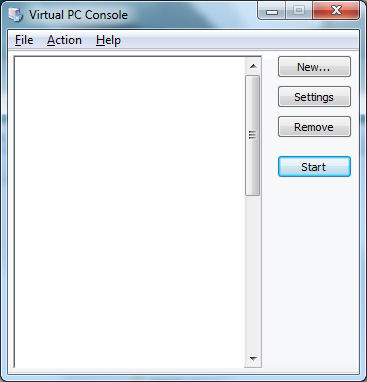
First load Virtual PC 2004 or 2007 and you should get a window like this with an empt list to start with. Any new machines will be added when you create a new machine. IF you want to import existing machines, just run the .VMC configuration file and it will automatically add it to the list.

Click on the New button to start the New Virtual Machine Wizard.
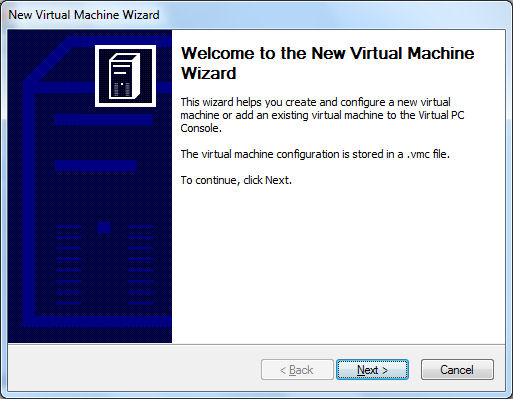
Click Next, then select option to Create a new virtual machine. Alternatively, you can create a new machine using the default settings or import an existing machine. Using the default settings will not create a virtual hard disk, which you can do in Settings and use the Virtual Disk Wizard.
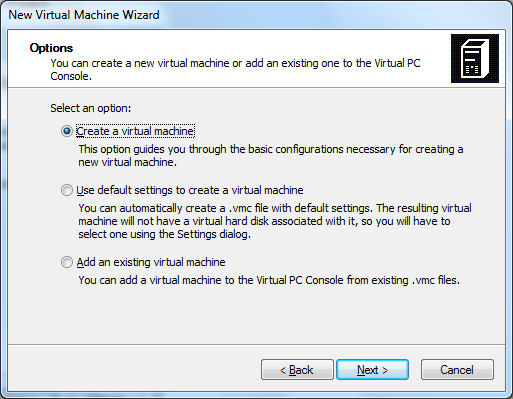
Click Next, and enter a new for your new machine, I tend to use the operating system name but you can add other details to differentiate between them.
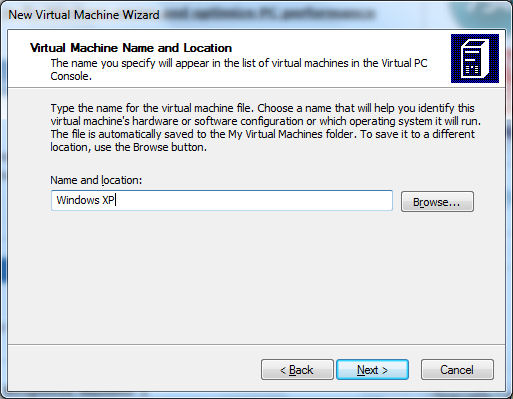
Click Next, and select the operating system you want to use. Sometimes it can detect what you want to use with the name you entered. Virtual PC supports: Windows 98, NT Workstation, 2000, XP, OS/2 and Vista (although you can use 95 and Windows 7 to a limited degree). It also, supports Server versions including Windows NT Server, 2000 Server, Server 2003, Server 2008 and Other if not listed.
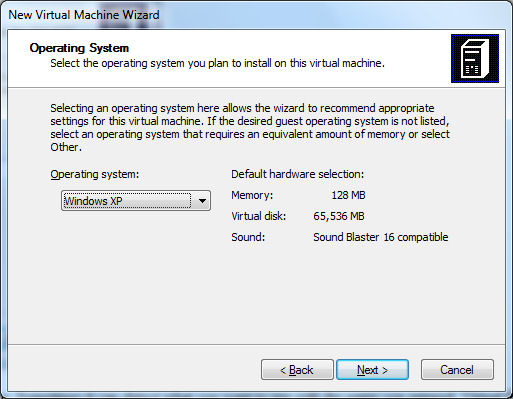
Click on Next, and select the RAM size for your machine. Always leave enough RAM for your Host system to work or you can end up crashing your system. The default of 128 MB is usually not enough, so select Adjusting the RAM.

If you selected Adjusting the RAM, move the slider across to allocate more memory to your system. Some suggestions: DOS = Anything less than 128 MB, Windows 2000 = 256 MB or more, Windows XP = 512 MB or more, Windows 2003 =800 MB or more.
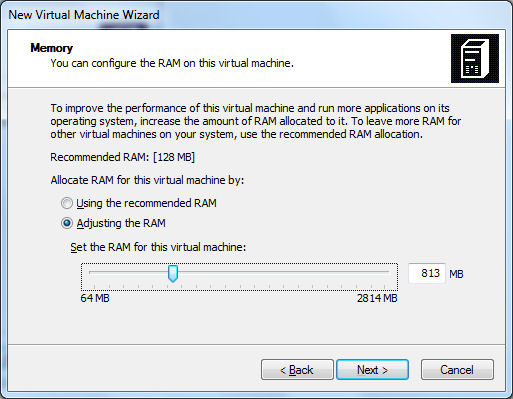
CLick Next. You can use either an existing virtual hard disk (.VHD file) or create a new virtual hard disk.
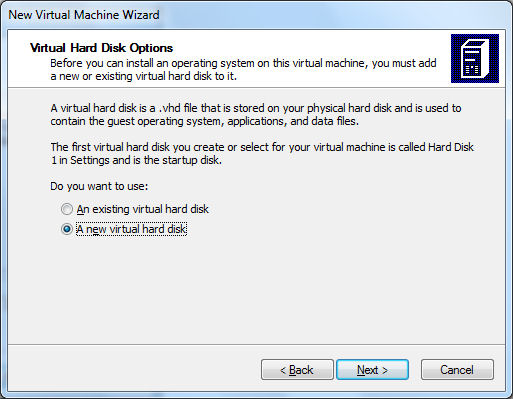
Click Next. Then you need to specify the path, name and size of the hard disk. By default it places it into your My Documents. I suggest placing it elsewhere otherwise it can affect things like backups which can get very large. The disk size can be upto 64 GB.
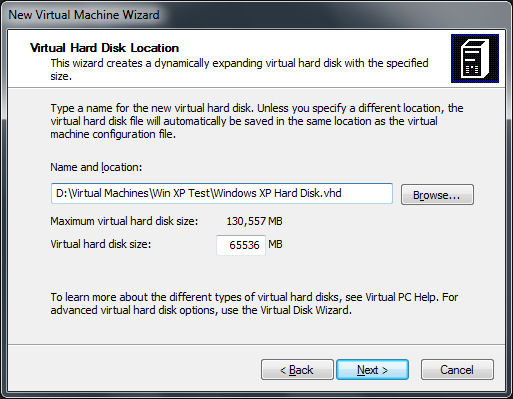
Click Next and click Finish. If you need to change something, you can select Back button or use the Settings to change individual settings.
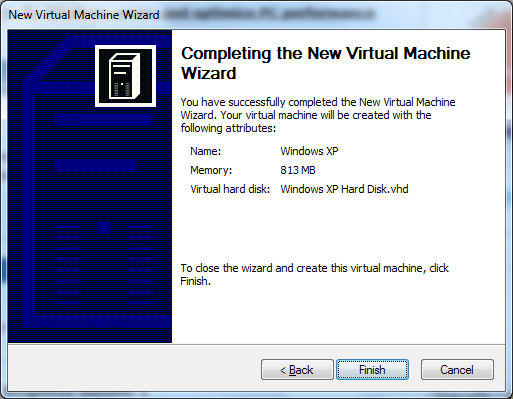
Once you are happy with the machine settings, click on Start to start up the VM. It will display BIOS POST settings and try to boot off the virtual hard disk, a CDROM or DVD or Floppy disk.
To insert a CD or DVD, insert the disc into the Host machine, click on the CD menu and select Use Phyiscal drive X: (where x: is a CD/DVD drive). If the disc is an ISO file, select Capture ISO Image and browse for an ISO image.
Once you have done setting up your operating system, I always try to shutdown the OS rather than close the window to avoid corruption. You can select either Turn off or Save State (if you want to save it and return to it later).